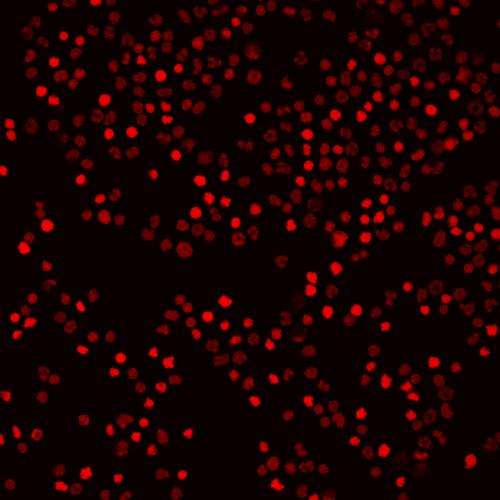A more complicated network than generally accepted may control maturation of B cells in the immune system

The process of blood cell development, known as hematopoiesis, gives rise to numerous different immune cell subtypes. Each of these in turn matures through a stepwise process governed by the action of transcription factors—specialized proteins that coordinate activation and deactivation of specific target genes.
Antibody-secreting B lymphocytes develop via a well-studied mechanism, but research from Ichiro Taniuchi's team at the RIKEN Center for Allergy and Immunology in Yokohama injects new complexity into this model. The current mechanism involves three transcription factors—E2A, Ebf1 and Pax5—that progressively set the stage for maturation of functional B lymphocytes. "Not only does this trio of transcription factors function sequentially, but each one is also responsible for the expression of the next," explains Wooseok Seo, a researcher in Taniuchi's laboratory and lead author of the study. "E2A is required for the expression of Ebf1, and so on."
Seo and Taniuchi were studying another transcription factor, Runx1, which is a critical component of blood cell development. Without Runx1, hematopoiesis cannot take place. The researchers therefore decided to study its role in B cell development by engineering a genetically modified mouse that expresses Runx1 in every cell except early stage B cell precursors.
Without Runx1, these cells stalled early in development, at essentially the same stage where Ebf1 exerts its effects. Seo and colleagues determined that Runx1, in partnership with the Cbfβ protein, normally binds to the promoter sequence that regulates Ebf1 production. Interestingly, Ebf1 has two distinct promoters; and, Runx1-Cbfβ and E2A each bind a different promoter of Ebf1. "Our hypothesis is that E2A and Runx1 might be distinctive, but not necessarily exclusive, in their mode of function," says Seo.
In the absence of Runx1, Ebf1 gene activity is drastically reduced, preventing downstream induction of the 'final step' in B cell differentiation. However, Runx1 also appears to activate a 'positive feedback' loop by switching on the gene encoding its upstream activator, E2A, thereby accelerating the process of B cell differentiation. Without Runx1, therefore, none of the three differentiation factors are properly expressed.
These findings suggest that earlier models of this process may be greatly oversimplified. "We propose that the simple hierarchy model of this trio of transcriptional factors for B cell development might not be true, and suggest a more complicated network," says Seo. He and his colleagues are now exploring the mechanisms Runx1 employs to control gene activity, and how these enable it to exert such a potent influence on hematopoietic development.
More information: Seo, W., Ikawa, T., Kawamoto, H. & Taniuchi, I. Runx1–Cbfβ facilitates early B lymphocyte development by regulating expression of Ebf1. The Journal of Experimental Medicine 209, 1255–1262 (2012). jem.rupress.org/content/early/ … em.20112745.abstract


















